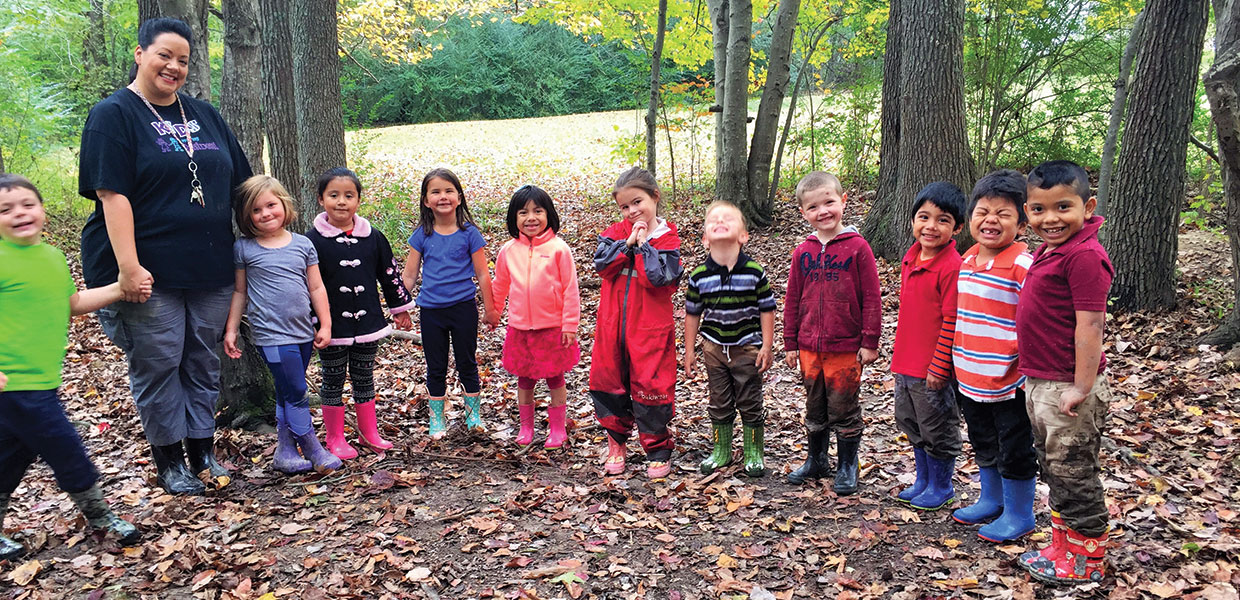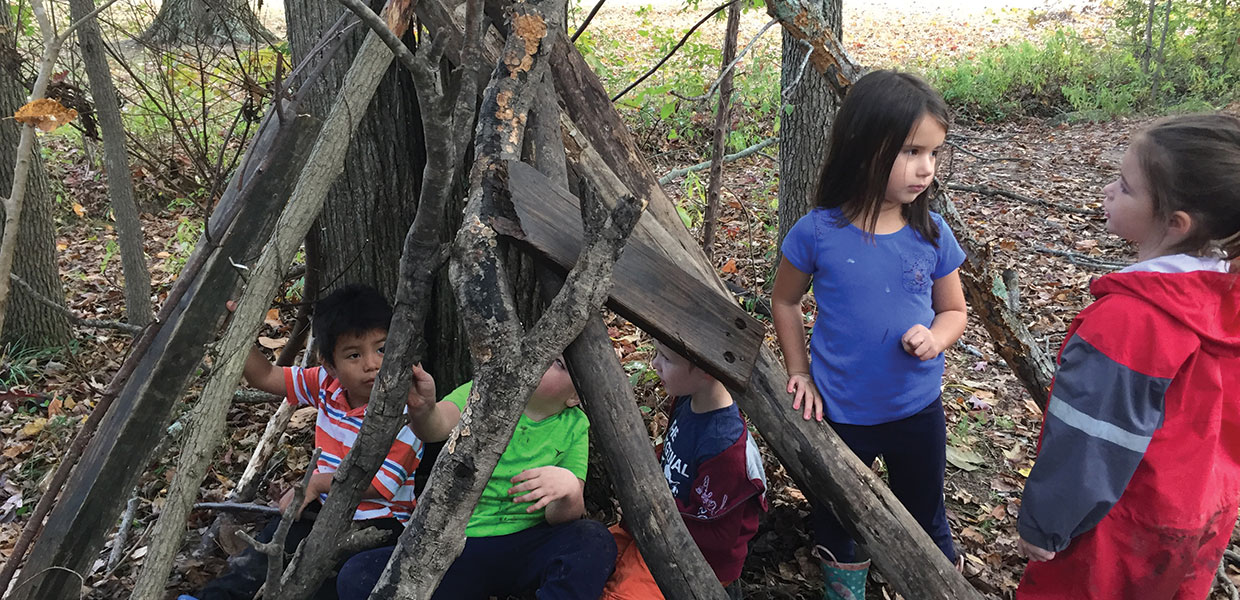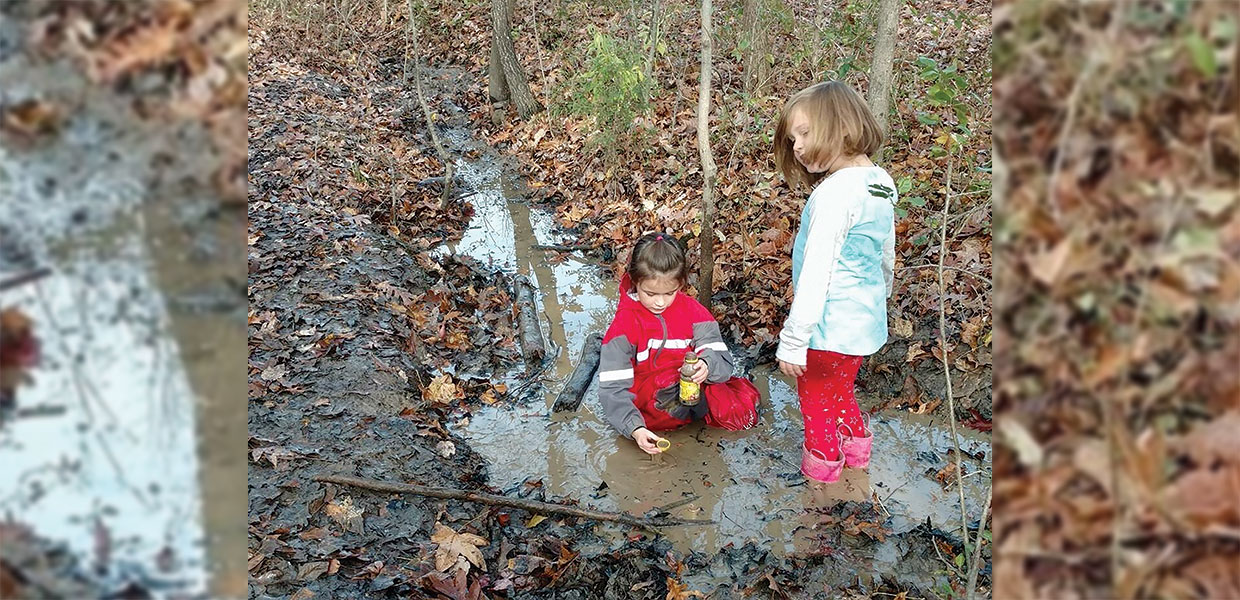


What kind of turtle is this? Why are the things on the ground like sticks, leaves, and grass turning black? Why do spiders make webs on the ground? Will this leaf float if it has holes in it?” These are typical questions asked by students in the Forest Kindergarten program at Ridgetop Adventist Elementary School (RAES) in Ridgetop, Tenn. This is the first year Shannon Armantrout, pre-K-K teacher, has put into practice the theories of Forest Kindergarten. Forest Kindergarten is based on the German model of total nature immersion and authentic play. There is no predetermined curriculum. Each day’s lesson plan is determined from what nature presents and from the children’s interest. The teacher, who is the mentor, allows students to spend time outdoors in nature, where branches and dirt replace whiteboards and desks. God is the teacher in this Forest Kindergarten program. Here valuable lessons about caring for nature and each other are learned in an authentic way.
This outdoor hands-on curriculum encourages imagination, play, and creativity. Two days a week, 11 students put on their boots, grab their water bottles, and head out to the wooded area on the grounds of RAES. Within a few minutes, children are looking for insects and jumping from logs, some into puddles from yesterday’s rain. Boys are dragging logs through the woods to build a fort. In another area, sticks and branches become a dental office where several sit waiting for the dentist to check their teeth.
For two and a half hours, toys are replaced by the imaginative use of sticks, rocks, and leaves. In the forest, students write their letters and numbers with sticks, build a bridge over a mud puddle, or create a seesaw with a big rock and a large beam. They create shapes and sort colors using sticks, leaves, and rocks — all this without traditional text books and worksheets. These four- and five-year-olds have gained understanding in many concepts and facts about their physical world they otherwise may not have learned for months or years. God has become more real and personal to them as they talk about what they found, built, observed, or learned in their forest.
Ellen White wrote, “The fields and hills — nature’s audience chamber — should be the schoolroom for the little children. Her treasures should be their textbook. The lessons thus imprinted upon their minds will not be soon forgotten,” Child Guidance, page 48. Grab your boots and join these students in the forest for some exciting learning!
Kentucky-Tennessee | January 2018



Comments are closed.